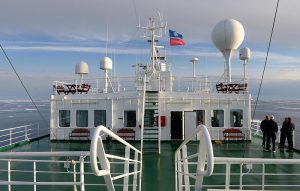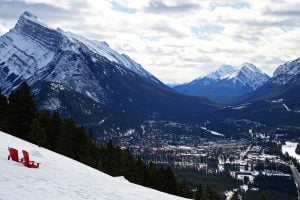
History
2014 Victoria Strait Expedition
This year's search is about much more than underwater archaeology. The Victoria Strait Expedition will contribute to northern science and communities.
- 1205 words
- 5 minutes
This article is over 5 years old and may contain outdated information.
History

Imagine scouring the turbulent, sub-zero waters of the Arctic Ocean floor in search of wreckage that’s more than a century old. Tough work, right? For Ryan Harris, a marine archeologist with Parks Canada’s Underwater Archaeology Service, it’s just another day on the job, one that will continue this summer as he helps lead the search for Sir John Franklin’s lost ships, the HMS Erebus and HMS Terror.
Now in its sixth year, the quest to find the ships, which disappeared 166 years ago during Sir John Franklin’s final and ill-fated 1845 expedition into the Canadian Arctic, will continue this summer.
For about four weeks starting in mid August, a Parks Canada team and a team of public and private partners will survey the northern depths of the Victoria Strait, the large body of water to the west of King William Island.
“If the weather cooperates and the ice doesn’t get in the way,” says Harris, “we hope that we might cover as much as 1,400 square kilometres.”
The searchers will use sonar to scan large blocks of the sea floor, and if something is detected, Harris and his team will evaluate the find. If it seems promising, he and the other divers will plunge below the surface to investigate further.
“After years of staring at the sonar screen and watching the sea floor scroll by hour after hour, I can only imagine the exhilaration of actually seeing something,” says Harris.
Harris says there’s a possibility that the ships could be intact — if the ice hasn’t reached them, that is. “If the ships are located in shallow water, there’s the potential for ice keels to rake over the wreck site, split it apart and smear it over the sea floor.”
But, Harris adds, the search team has already surveyed most of the shallow areas. “As we search farther north, the water gets deeper, which increases the odds of a wreck surviving, hopefully in remarkable condition.”
Are you passionate about Canadian geography?
You can support Canadian Geographic in 3 ways:

History
This year's search is about much more than underwater archaeology. The Victoria Strait Expedition will contribute to northern science and communities.

Places
In Banff National Park, Alberta, as in protected areas across the country, managers find it difficult to balance the desire of people to experience wilderness with an imperative to conserve it

History
First official day of the 2014 search for Sir John Franklin’s lost ships

Places
Responding to feedback from Canadians, environment minister Catherine McKenna promised a renewed focus on science and conservation for Canada's protected places